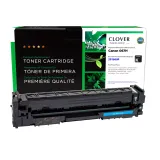
Firmware is a term that might seem elusive but plays a fundamental role in the seamless operation of modern electronic devices. These vital pieces of software are embedded deeply within the hardware, acting as the central nervous system that commands every function, from basic operations to complex tasks.
While firmware updates can offer essential benefits, enhancing functionality and patching security gaps, they also come with their share of challenges, especially when dealing with compatibility. Understanding these updates, recognizing their importance, and managing them appropriately are crucial steps in maintaining the longevity and efficiency of your printing equipment.
What is Firmware?
Firmware is the embedded software that provides the necessary instructions for how a device operates at its most fundamental level. Unlike application software that you can install and update freely on your computer or smartphone, firmware is typically designed to be a permanent part of the hardware, stored in non-volatile memory. This makes it an indispensable part of your device's functionality, especially in printers and cartridges where it manages everything from print jobs to connectivity with different network environments.
Understanding Where Firmware Updates Add Value
Firmware updates are crucial not only for introducing new features or refining existing ones but also for ensuring the security and performance of devices. They patch security vulnerabilities, enhance device efficiency, and fix bugs. However, these updates can also introduce new challenges, affecting system stability and compatibility with existing setups—issues that are significant enough for even OEMs to recommend disabling automatic firmware updates.
Risks Associated with Automatic Firmware Updates
Automatic firmware updates, while convenient, can create significant operational disruptions, especially in environments using a mix of OEM and remanufactured devices. These updates may not consider unique configurations, leading to compatibility issues that disrupt device functionality and network communication. Additionally, updates can occur at inopportune times and may introduce unvetted changes that compromise device stability or security.
- Compatibility Issues: Automatic updates may not always consider the unique configurations of remanufactured devices. This can lead to compatibility problems where new firmware conflicts with the existing hardware setup, potentially disrupting device functionality.
- Inopportune Timing: Updates that install automatically can occur at inconvenient times, such as during critical printing tasks or high-volume business hours. This can lead to unexpected downtimes and disrupt business operations.
- Unvetted Changes: Sometimes, firmware updates are rolled out to address specific issues but may introduce new bugs or vulnerabilities. Without the ability to review and test these updates before they are applied, you risk installing software that could compromise the device’s stability or security.
Given these risks, it is advisable for businesses to adopt a more controlled approach to firmware updates, ensuring that each update is thoroughly vetted and compatible with the specific requirements of their remanufactured devices.
OEMs and Firmware Updates
Interestingly, even OEMs—whose products stand to benefit from exclusive compatibility with their updates—often advise against enabling automatic firmware updates. The reason is straightforward: automatic updates can sometimes introduce changes that might not be fully compatible with a user's specific setup or needs. These can include operational disruptions or inadvertent compatibility issues with certain network environments or connected devices.
By advising against automatic updates, manufacturers acknowledge the potential for updates to affect system stability and user experience negatively. This stance underscores the importance of a cautious approach to firmware management, emphasizing the need for manual oversight and informed decision-making before applying updates.
The Hidden Costs of Firmware Updates
Firmware updates are crucial for maintaining the security and functionality of your devices, but they come with a less discussed downside: the potential to increase operational costs and limit your choices. When it comes to printers, particularly those using remanufactured cartridges, a firmware update can sometimes introduce compatibility issues that were not previously present.
Cost Implications of Firmware Updates
Manufacturers often release firmware updates that can inadvertently restrict the use of remanufactured cartridges. This not only forces businesses and consumers to opt for often more expensive OEM (Original Equipment Manufacturer) cartridges but also limits the market's freedom to choose more cost-effective and environmentally friendly options. The economic impact here is twofold: increased direct spending on supplies and a reduced ability to manage print costs effectively.
Compatibility and Network Issues
While firmware updates are intended to enhance device compatibility and functionality within a modern technological environment, they can sometimes do the opposite. An update might lead to devices no longer communicating effectively with existing network setups or other connected devices. This can disrupt workflows and require additional time and resources to resolve, further adding to the indirect costs of a seemingly beneficial firmware update.
Best Practices for Firmware Management
To manage firmware updates effectively and avoid potential pitfalls, consider the following best practices:
- Manual Updates: Rather than allowing automatic updates, manually check for firmware releases. This allows you to review the update notes, understand what changes will be made, and prepare for the update accordingly.
- Scheduled Updates: Plan firmware updates during off-peak hours or when it will have the least impact on business operations. This helps minimize any disruptions caused by the update process.
- Pre-testing Updates: If possible, test firmware updates in a non-critical environment or on a small number of devices first. This can help identify any issues before a widespread rollout.
- Strategic Assessment: Before applying any updates, evaluate the potential benefits against the possible drawbacks. If an update is likely to limit your choice of consumables—such as forcing the use of more expensive OEM cartridges over remanufactured options—it might be more prudent to withhold the update. Consider how such changes could affect not only direct costs but also your organization's ability to meet sustainability objectives.
By adopting these practices, organizations can maintain greater control over their firmware environments, ensuring that updates contribute positively to device functionality and security without causing unexpected issues.
Navigating Firmware Updates with Confidence
Firmware is the unseen yet essential component that drives the performance and security of your printers and other electronic devices. While firmware updates provide critical benefits such as enhanced features, improved security, and bug fixes, managing these updates requires careful consideration, especially in the context of remanufactured devices. The risks of automatic updates—ranging from compatibility issues to poorly timed installations—necessitate a strategic approach.
By adopting best practices such as conducting manual updates, scheduling updates during low-impact periods, and pre-testing in controlled environments, organizations can ensure that firmware updates improve device functionality without disrupting operations. Staying proactive in firmware management not only preserves the longevity and efficacy of your equipment but also safeguards your technological infrastructure.
Stay Updated, Stay Supported
To stay on top of your firmware updates without the hassles of unexpected disruptions, we encourage you to leverage the resources available through our Technical Resource Center. Here, you’ll find detailed guides, service manuals, and direct support to help you manage firmware updates effectively.
Should you encounter any issues with a firmware update, most can be rolled back to restore your device's previous state, ensuring continuity and stability in your operations.
Visit Clover Imaging’s Technical Resource Center today to ensure your remanufactured devices continue to operate at their best, with all the support you need right at your fingertips.













Comments